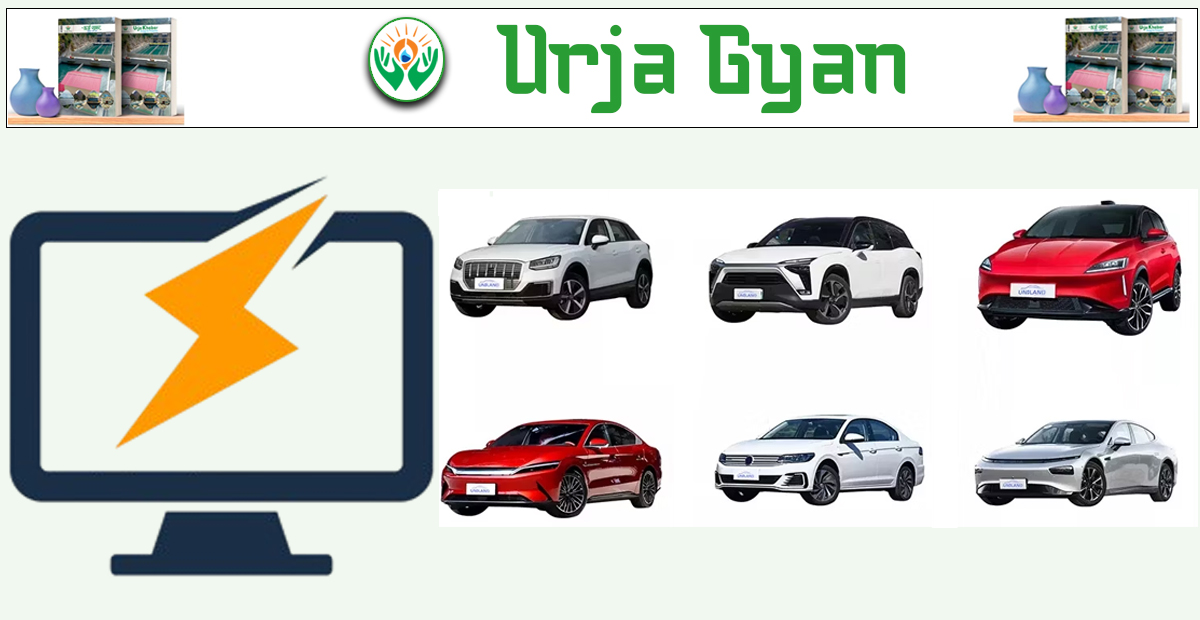
Kathmandu. In the "Urja Gyan" column, which is published every Friday by Urja Khabar, this week we are trying to provide information about electric vehicles, their advantages, and disadvantages. Last week, we attempted to provide information about various topics including electricity transmission and distribution.
1. Electric Vehicles

An electric vehicle (EV) is a vehicle powered by a battery, and it has become quite popular today. It is also referred to as "Electric Vehicle" or abbreviated as "EV." In recent years, Nepal has been spending more on the import of petroleum products than the total revenue generated from exports. In this context, since the electricity used to charge the battery can be generated domestically, it is crucial to promote the widespread use of electric vehicles in Nepal.
2. Advantages of Electric Vehicles

Zero Pollution: Since electric vehicles do not use fossil fuels like petrol or diesel and run on electric power, they are pollution-free. In some countries, however, the electricity used for charging EVs comes from diesel or coal, so in those contexts, EVs cannot be considered 'pollution-free.' However, in Nepal, where the electricity source is hydroelectric power, this is not the case.
Recyclable: The lithium-ion batteries used in modern EVs can be fully recycled, solving the issue of where to dispose of them.
Low Maintenance Costs: Since there are fewer moving parts, the operation and maintenance costs are lower.
No Noise Pollution: Unlike petrol or diesel vehicles, EVs generate no noise pollution.
Highly Suitable for Nepal: In particular, electric vehicles are highly useful for areas like Kathmandu Valley, where high numbers of petrol and diesel vehicles contribute to air pollution. Nepal does not produce petroleum products and has to rely on imports, but the electricity required for charging batteries is generated domestically, making EVs highly suitable for the country.
3. Disadvantages of Electric Vehicles
Limited Range: After covering a certain distance, the battery needs to be recharged, which requires waiting. This issue is more prominent during long-distance travel. To address this, fast-charging stations should be established in various locations where EVs can charge in about half an hour.
Battery Weight: The battery weighs about 20-30% of the vehicle's total weight, reducing the vehicle's load-carrying capacity. To achieve greater mileage, the battery weight also increases.
Cost: Electric vehicles are more expensive compared to petrol or diesel vehicles. This is mainly due to the lower production volume, which leads to higher prices.
Multiple-Choice Questions
1. What happens if the direct current (DC) supply to a substation/power station is interrupted ?
(a) No difference
(b) Emergency light will not turn on
(c) The protection system will not work
(d) Both (b) and (c)
Answer: (d) Both (b) and (c)
2. Which equipment can be used to improve the power factor ?
(a) Induction motor
(b) Inductor
(c) Capacitor
(d) Resistor
Answer: Capacitor
3. Which light bulb is the most efficient ?
(a) Regular bulb
(b) CFL
(c) Tube light
(d) LED
Answer: Tube light
4. What type of power is represented by VAR ?
(a) Active
(b) Reactive
(c) Resistive
(d) Inductive
Answer: Reactive (Note: VAR = Reactive Power)
5. Which of the following machines has the highest efficiency?
(a) Alternator
(b) Induction motor
(c) Transformer
(d) DC generator
Answer: Transformer
6. What material is used in the filament of a low-efficiency incandescent bulb?
(a) Silver
(b) Carbon
(c) Tungsten
(d) Steel
Answer: Tungsten
7. What is the main device used to convert AC to DC?
(a) Magnetometer
(b) Galvanometer
(c) Rectifier
(d) Mini transformer
Answer: Rectifier